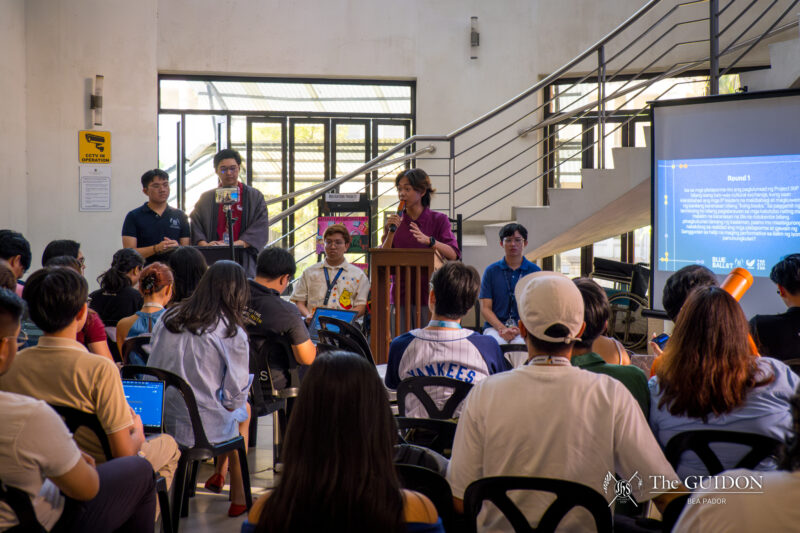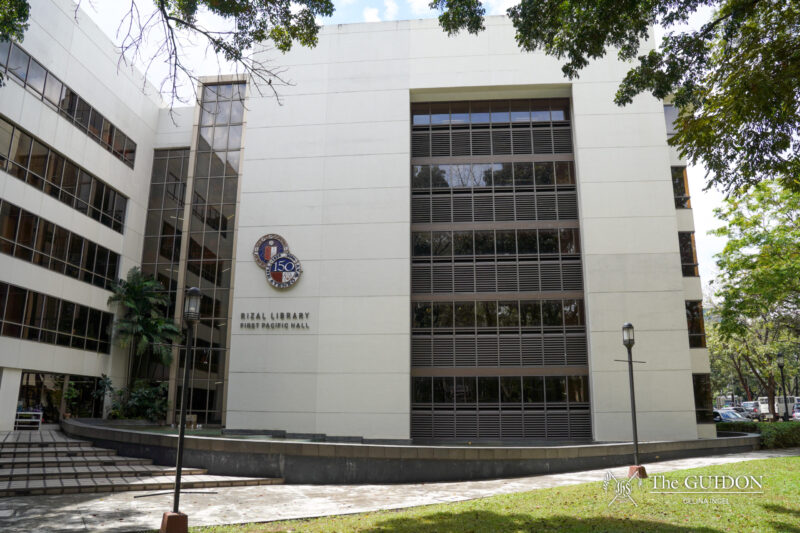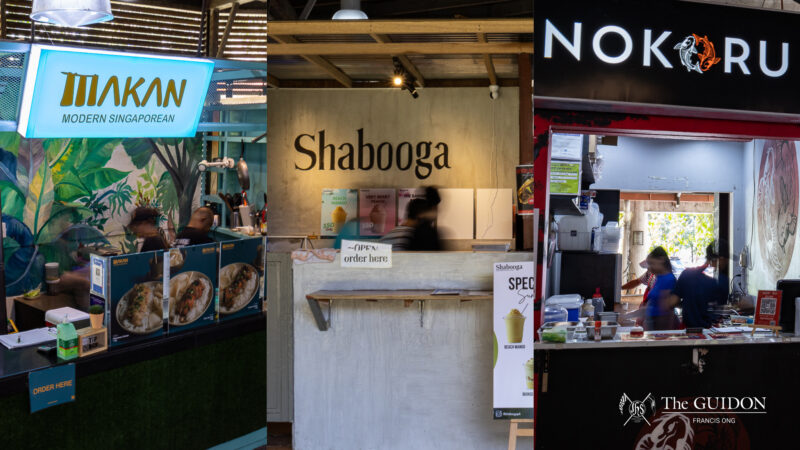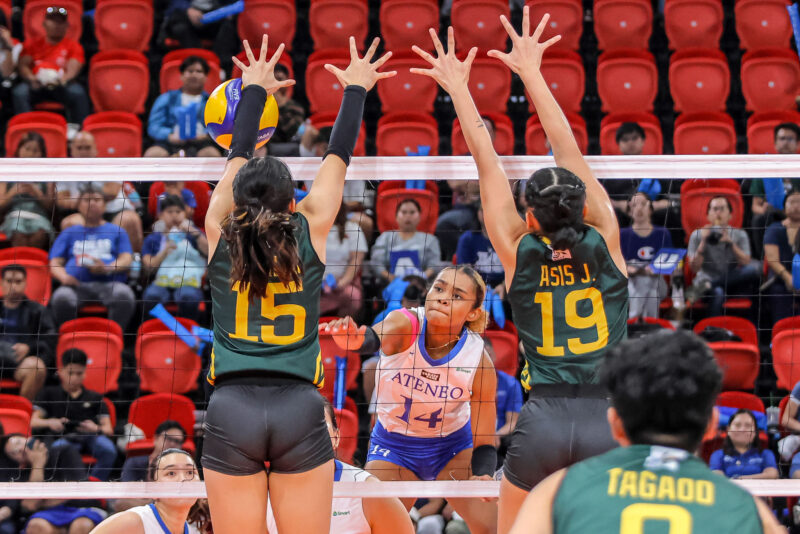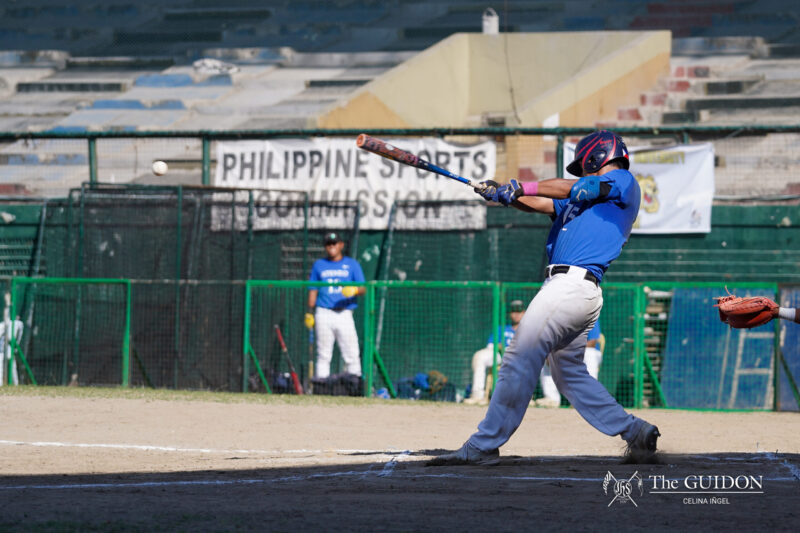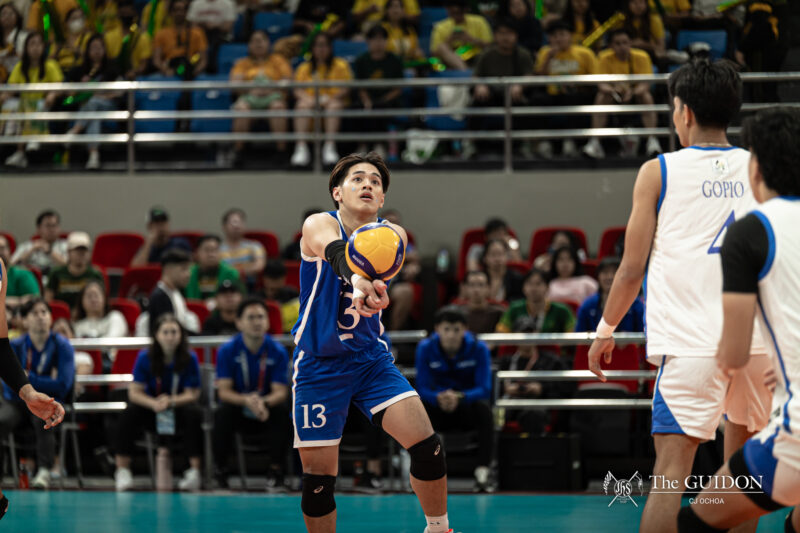IN ITS bid for transparency, the Sanggunian released a series of infographics over a two-week period that details the breakdown of the Student Activities Fund (SAF) used from June to December of 2014.
The SAF is a pool of funds that each student contributes to every semester, with disbursements going to the Council of Organizations of the Ateneo (COA) Central Board (CB) and its individual organizations, the Office of Student Activities (OSA) and the Sanggunian.
This school year, P514.65 was collected from each student for each regular semester. For the summer semester, students pay P485.55.
The first infographic of the series was released on January 27, with a general overview of how each main beneficiary of the fund works with the allocation provided, before providing more specific breakdowns on allocation utilization.
The Sanggunian’s release of the SAF breakdown is the first time that information on the student fee has been made available to the public in detail.
Sanggunian Finance Officer Ray Gomez said that the student government was only able to obtain the data from the administration this year through OSA and Vice President for the Loyola Schools John Paul Vergara, PhD.
“We feel that it’s about time we give this kind of information to the students,” said Gomez, whose candidacy platform included the release of a SAF breakdown.
Sanggunian Vice President Ryan Yu noted that Vergara was a key part in securing information on the SAF.
In an interview with The GUIDON, Vergara said that he has been inviting the Sanggunian to be more transparent “for the longest time, so they can act a bit more like a check and balance for the funds.”
Vergara also noted that information on the SAF from previous academic years is also available for release. “All they have to do is ask.”
Clamor for the SAF
“[The SAF issue] has been around for a long time… I think it’s been something we’ve always wanted to get at,” said Yu.
He felt that students, as direct contributors to the SAF, deserve to know where the money goes.
Yu said that transparency with regard to the fund is crucial to facilitating a discussion on the tuition fee and how the students’ own money is distributed.
“Ultimately, we don’t know what that money’s composed of in terms of how it is spent and how it is allocated, and at the end of the year, where it goes afterwards,” he said.
Yu noted that previous Sanggunian administrations were prevented from gaining access to documents.
“In the past, we coursed our requests for information through OSA, but [OSA Director Chris Castillo] felt that the information was ‘too raw’ for release to the general public,” Yu noted.
As of press time, Castillo was not available for comment.
Aside from the infographics, both Yu and Gomez plan to release the analyzed raw financial data to the public as soon as possible.
“It’s not the most appealing thing to see all these great numbers [from the raw data]… but I processed everything [and] we can release it,” Gomez said.
In anticipation of the questions and inquiries on the SAF from concerned constituents, the Sanggunian has opened a page where students can ask questions directly to the Sanggunian at ask.fm/SangguFinancialTransparency.
“On Sanggu’s end, our books are pretty much open. If students want to ask, even up to the project level, we’re willing to answer it,” Yu said.
Fund allocation
According to Vergara, the SAF is a restricted fund. The money directed towards it can only be used to fund student activities and the portion that is not spent in one year automatically carries over to the next.
The first infographic released for the campaign showed that as of December 2014, P4.84 million out of the P6.1 M available for the current academic year’s fund has been disbursed to its four main beneficiaries.
The biggest portion of the fund, amounting to around P3.17 M, goes toward funding each of the 52 accredited organizations through allocations and grants.
P15,000 is earmarked for each of COA’s 52 accredited student organizations per semester to help form each organization’s base operating budget.
The COA CB received around a quarter of the SAF disbursements, amounting to around P1.21 M.
COA CB’s money is used to fund projects put forward by each of COA’s clusters, such as meetings, seminars and cluster-specific initiatives.
The Sanggunian itself received P1.16 M, which was used to fund each Loyola Schools’ activities and initiatives and other Sanggunian-related departments, such as the Department of Student Welfare Services (DSWS).
Moreover, OSA received P0.57 M from the SAF to fund its formation programs and internal activities, aside from the almost P700,000 the office received in loans from sources not specified in the infographics.
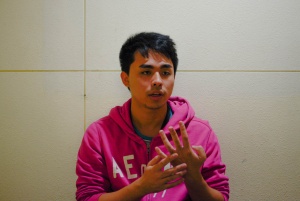
TRANSPARENCY. Sanggunian Finance Officer Ray Gomez, who promised the release of the Student Activities Fund breakdown during his campaign, said it is time for the students to have the said information.(Photo by Arielle A. Acosta)
Spending breakdown
Aside from the general overview, the Sanggunian also released a more specific spending breakdown for each of the four beneficiaries.
For the Sanggunian, the CB used the biggest portion of the disbursement, with money going to internal affairs and involvement with other events and groups, such as the Ateneo Freshmen Orientation Seminar (Orsem) and the Buklod Atenista, an alliance of student councils of the five Ateneo schools in the Philippines.
The Sanggunian’s event that incurred the most expenses were the Freshmen Nights held on the first night of the Orsem to welcome the students into their respective schools. The four Freshmen Nights amounted to a total Sanggunian-wide spending of P237,234.91 with the School of Humanities spending P16,083.19, the School of Social Sciences spending P31,506.75, the John Gokongwei School of Management spending P87,947.25 and the School of Science and Engineering spending P101,697.72 on their respective events.
Other expenses for the Sanggunian included each school’s respective Planning Seminar and the DSWS, with the latter accounting for almost P500,000 of the Sanggunian’s total disbursement.
Moreover, the biggest disbursement afforded by COA was the subsidies granted to accredited student organizations, amounting to more than half of COA’s P1.21 M allocation.
COA’s largest event in terms of spending was the Recruitment Week held at the start of the school year, with over P282,887.88 going towards various operational costs.
Eighteen percent of COA’s total spending was allocated towards various seminars, meetings and initiatives held by the various clusters of COA: The Analysis and Discourse Cluster, Business Cluster, Faith Formation Cluster, Health and Environmental Cluster, Intercultural Relations Cluster, Media and the Creative Arts Cluster, Performing Arts Cluster, Science and Technology Cluster and the Sector-based Cluster.
In contrast to the information released on the Sanggunian and COA, infographics for the allocations directed towards accredited student organizations and OSA only covered spending up to a more general level.
On the student organizations side, subsidies are also available to supplement an organization’s budget aside from the base funds provided per semester, with over 45% of the P3.17 M dedicated to organizations being spent on subsidies alone.
Around P180,640 was also used from the same fund to provide subsidies and grants to non-accredited organizations, groups and individuals.
The recipients of both types of subsidies were not made available by the infographics.
In comparison, the biggest expense incurred by OSA are its formation programs, amounting to almost P700,000 of all spending by the office.
Around 28.5%, or P315,000, of OSA’s total allotment was used towards internal expenses, such as communication, supplies, and honorariums and allowances. P201,093.98 went towards subsidies for individual projects.
Like the recipients of COA subsidies, the beneficiaries of OSA subsidies were not made public.
According to the infographics, OSA also receives P689,046.34 in loans from an unknown source to help offset its expenses.
On the lack of information regarding OSA’s expenses, Yu notes that it is up to OSA itself to release a more specific breakdown on their expenses.
Similarly, details on how each organization spent their P15,000 per semester and subsequent subsidies were not included in the Sanggunian’s release of information. According to Gomez, it is up to individual organizations to disclose their own expenses.
In contrast to information on the SAF, no information was released on how student funds were spent on other programs, such as the Publications Fee, which supports The GUIDON, Heights Ateneo, Matanglawin and other student publications, and the Athletics Fee, which helps maintain the Ateneo’s college-level athletic endeavors.
However, Yu noted that the Sanggunian has acquired the necessary information on both fees, and that the information is still being processed for presentation.
He said that the Sanggunian aims to release information on the Publications Fee and the Athletics Fee by the end of the academic year.
Yu hopes students take a closer look at the budget and where their funds are spent. “We’re not just [releasing the SAF] just for the sake of releasing it. We want to improve our services. Hopefully [the students] can give us their opinions after seeing where their money goes.”
With reports from Jairus I. Paul


